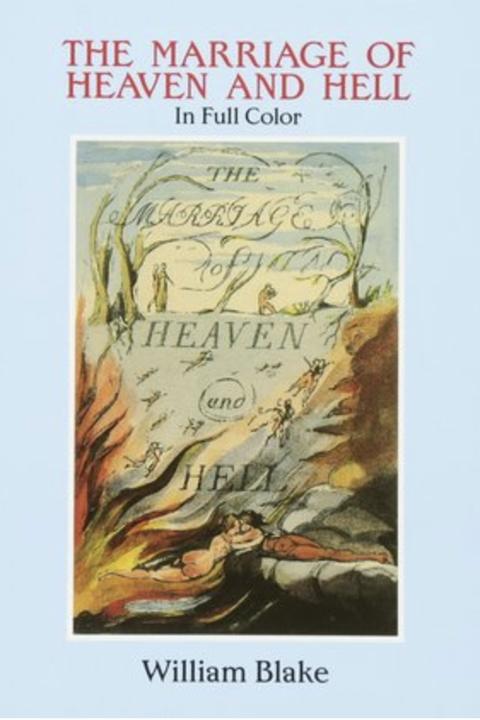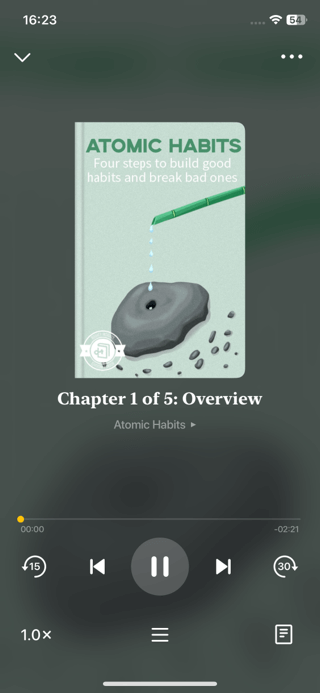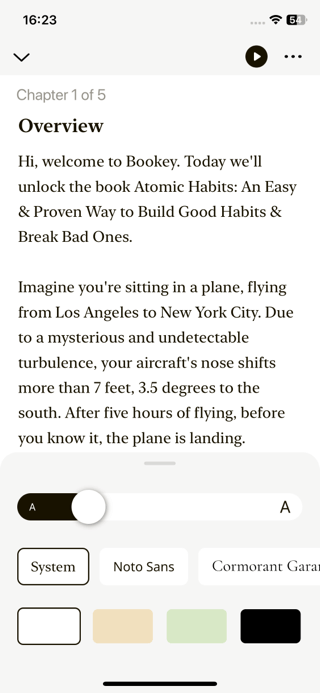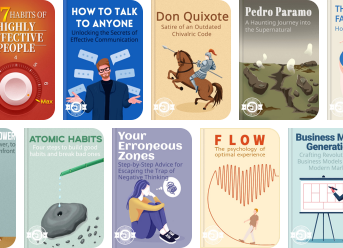Last updated on 2025/08/08
The Marriage Of Heaven And Hell Summary
William Blake
The Harmony of Opposites in Human Experience.
Last updated on 2025/08/08
The Marriage Of Heaven And Hell Summary
William Blake
The Harmony of Opposites in Human Experience.
Description

How many pages in The Marriage Of Heaven And Hell?
48 pages
What is the release date for The Marriage Of Heaven And Hell?
"The Marriage of Heaven and Hell" by William Blake is a provocative and visionary work that challenges the conventional dichotomy between good and evil, presenting a radical reimagining of moral and spiritual duality. Through a series of incisive poems and daring illustrations, Blake invites readers to plunge into the vibrant interplay of opposites, where heaven is not a realm of pure light, but rather a space enriched by the passions and experiences of hell. This transformative text encourages us to embrace the tumult of human existence—pleasures, pains, and the wild beauty of creation—arguing that true enlightenment lies not in the renunciation of our earthly desires, but in the harmonious union of spirit and flesh. With its rich symbols and compelling philosophy, Blake's work beckons readers to shed their preconceived notions and embark on a journey that promises to deepen their understanding of the profound interconnectedness of all aspects of life.
Author William Blake
William Blake was an English poet, painter, and printmaker, born on November 28, 1757, in London, and is now regarded as one of the foremost figures of the Romantic Age. Often considered a visionary, Blake was not only a creative genius but also a profound thinker, who combined his artistic talents with deep philosophical and spiritual insights. His work often explored complex themes such as the duality of human existence, the nature of the divine, and the struggles between reason and imagination. Despite facing considerable criticism during his lifetime and being largely unrecognized by his contemporaries, Blake's unique style, characterized by vibrant imagery and innovative techniques, has since garnered immense acclaim, establishing him as a seminal voice in both poetry and visual arts.
The Marriage Of Heaven And Hell Summary |Free PDF Download
The Marriage Of Heaven And Hell
Chapter 1 | THE VOICE OF THE DEVIL
In the opening chapter of "The Marriage of Heaven and Hell," William Blake presents a thought-provoking exploration of the nature of existence through the "Voice of the Devil." He starts by challenging conventional religious beliefs, particularly those concerning the nature of man and the dichotomy of body and soul. Blake argues that rather than being separate entities, the body is an aspect of the soul perceived through the senses. He flips the traditional view on its head, claiming that energy, often labeled as evil, is essential for life and joy, while reason is a limiting force that can suppress true desire. He critiques the idea that following one’s inherent energies and desires leads to eternal punishment, suggesting instead that those who restrain their desires are merely weak and hinder their own potential. This leads to a passive existence, undermining the vibrant essence of life that energy represents. Blake's narrative weaves in references to literary works like Milton's "Paradise Lost," where he contrasts the roles of the Archangel, or Messiah, with the Devil, positing that both sides have co-opted the narrative of virtue and sin for their own purposes. He presents a radical interpretation of biblical figures, suggesting that after Christ’s death, he transformed into Jehovah, the fire that embodies divine judgment, while Milton's works reveal a complex relationship with the concepts of angels and devils. This tension between order (reason) and chaos (energy) becomes a central theme, highlighting the inherent struggle within humanity to reconcile these opposing forces. Blake ultimately posits that true bliss lies in embracing energies rather than denying them, making a compelling case for a more nuanced understanding of good and evil. His insights not only challenge the status quo but also invite readers to rethink their perceptions of desire, reason, and the divine.
Key Point: Embrace your energies and desires as essential for fulfillment
Critical Interpretation: Imagine living in a world where you fully embrace your deepest desires and energies, as Blake urges you to do. Consider how liberating it would feel to break free from societal constraints that label your passions as sinful or misguided. Instead of suppressing what makes you inherently alive, you would welcome these energy forces, allowing them to guide you towards true joy and fulfillment. This radical acceptance not only fuels your creativity and authenticity but also empowers you to live boldly, rewriting the narrative of your life. By recognizing that your inherent desires are not opposed to virtue, but rather a vital part of your existence, you step into a richer, more vibrant reality, where balance can be found in the dynamic dance between chaos and order.
Chapter 2 | PROVERBS OF HELL
In Chapter 2 of William Blake's "The Marriage of Heaven and Hell," we dive into the captivating "Proverbs of Hell," where a collection of striking aphorisms illuminates the complex relationship between good and evil, wisdom and folly, and freedom and constraint. Blake juxtaposes the sacred and the profane, suggesting that true understanding often lies beyond conventional moral boundaries. The verses provoke thought, embracing contradictions and revealing a deeper truth found in experiences often deemed sinful or wrong by societal standards. The chapter begins with the importance of learning through life’s cycles—one must learn in the planting season, teach during the harvest, and enjoy in winter, stressing the value of experience in shaping wisdom. This idea flows into the bold proclamation that the "road of excess leads to the palace of wisdom," suggesting that indulgence and embracing one’s desires can lead to enlightenment, a sharp contrast to traditional values that prioritize restraint. Blake’s proverbs delve deeply into human nature, presenting a vibrant spectrum of emotions and actions. The image of the "busy bee" demonstrates a life filled with activity and purpose, leaving little room for sorrow, while the idea that "a fool sees not the same tree that a wise man sees" highlights the differing perceptions shaped by our understanding and experience. In this light, folly can transform into wisdom if one chooses to learn from their mistakes. Moving on, Blake critiques dogmatic structures, remarking that "prisons are built with stones of law, brothels with bricks of religion," which exposes the oppressive nature of societal rules that constrain true expression and joy. The celebration of natural instincts and passions, symbolized through lines about the pride and wrath of animals, positions these traits as divine rather than sinful. "The nakedness of woman is the work of God," defies cultural repression, celebrating the inherent beauty and freedom of the human form. Themes of duality persist throughout the chapter, particularly the interplay between joy and sorrow. Blake poignantly captures that "excess of sorrow laughs, excess of joy weeps,” reminding us of the intricate balance of emotions that define the human experience. He urges the embrace of our innate capacities, advocating for self-awareness and individual expression over conformity. "The soul of sweet delight can never be defiled," reflects this sentiment, emphasizing the purity and resilience of joy. Ultimately, Blake calls upon readers to reject the limitations imposed by religious and societal institutions. He exhorts us to look within, insisting that "all deities reside in the human breast." This empowering declaration encourages self-discovery and authenticity, revealing that true divinity and wisdom lie not in external worship but in the acceptance of our inherent desires and experiences. The aphorisms serve as a reminder to embrace the complexities of life, urging an understanding that transcends simplistic binaries of good and evil, leading to a fuller, richer existence.
Key Point: The road of excess leads to the palace of wisdom
Critical Interpretation: Imagine allowing yourself to explore the depths of your desires without hesitation or guilt, for in doing so, you open the door to profound insights and understanding. By embracing the complexities of life, including the indulgences that society often warns against, you may discover a wisdom that transcends conventional boundaries. This journey towards enlightenment invites you to step outside the constraints of tradition and experience the world in all its vibrant contradictions, ultimately leading you toward a more authentic and fulfilling existence.
Chapter 3 | A MEMORABLE FANCY
In Chapter 3 of "The Marriage of Heaven and Hell," the narrator invites the prophetic figures Isaiah and Ezekiel for a meal, leading to a thoughtful and lively exchange about divine communication and the nature of perception. Isaiah boldly states that he never saw or heard God in a conventional sense but recognized the infinite in everything around him. His understanding suggests that true divine inspiration comes from personal conviction and the voice of honest indignation, and he dismissively acknowledges potential misunderstandings as secondary to his mission. Ezekiel builds on this, explaining that different cultures have various philosophies about perception, but the Israelites believed that the Poetic Genius was central to understanding creation, elevating it above the priests and philosophers of other nations. This belief reflects a deep pride in their spiritual legacy, as he argues that these ideas have become universally accepted, validating their historical significance. Curiosity prevails, and the narrator questions both prophets about their more eccentric behaviors—Isaiah’s nakedness and Ezekiel's unusual dietary choices—as acts meant to elevate human consciousness and challenge comfort for the sake of higher truths. Ezekiel articulates that such sacrifices are essential for awakening others to the infinite potential within themselves, much like practices among North American tribes. The conversation then shifts to a dramatic prophecy about the world’s eventual fiery demise, a reckoning that will reveal the infinite essence obscured by material perceptions. This transformation hinges on the idea that the notion of a distinct body and soul must dissolve. The narrator reveals plans to express these ideas through a "corrosive" method of writing, suggesting that by shedding superficial veils, humanity can rediscover the boundless nature of existence. He hints that mankind has restricted their vision, seeing only through narrow openings, but when they are freed from these limitations, everything will be understood in its true, infinite form. Overall, this chapter encapsulates themes of perception, creativity, and the quest for spiritual truth, urging readers to look beyond societal norms and embrace a deeper connection with the world.
Key Point: True divine inspiration comes from personal conviction.
Critical Interpretation: Imagine how your life could transform if you embraced the idea that true divine inspiration isn’t found in the rigid structures of tradition or the voices of authority, but rather in your own spirit and genuine feelings. Blake's perspective urges you to trust your intuition and allow your passions—however unconventional—to guide your path. By recognizing the infinite presence in everything around you, you can cultivate a deeper understanding of yourself and your purpose, breaking free from societal norms to express your authentic self. This liberation invites a vibrant existence marked by creativity and profound connections with the world.
Chapter 4 | A MEMORABLE FANCY
In Chapter 4 of "The Marriage of Heaven and Hell," William Blake takes us on a vivid journey through a metaphorical printing house in Hell, where he illustrates the intricate process of how knowledge is passed down through generations. The chapter unfolds in a series of striking chambers, each filled with dynamic imagery and powerful symbols. In the first chamber, we encounter a dragon-man removing debris from a cave’s entrance, hinting at the clearing of ignorance to make way for understanding. As we move to the second chamber, a viper coils around the cave, adorned with precious materials, symbolizing the allure and deception that accompany knowledge. The third chamber features an eagle, embodying inspiration and imagination, creating an infinite space where eagle-like men construct grand palaces—this represents the limitless potential of human creativity. The fourth chamber introduces fiery lions that melt metals into fluid forms, suggesting transformation and the raw power of creation. In the fifth chamber, abstract forms shape the molten metals into new ideas, which are then received by men in the sixth chamber. Here, knowledge manifests itself as books organized within libraries, signifying the culmination of human thought and learning. Blake contrasts two archetypal forces in existence: the Prolific, which symbolizes creation and abundance, and the Devouring, representing consumption and limitation. He argues that the Prolific is often misunderstood as being bound by the chains of the Devourer, but in reality, they are interdependent. The passage emphasizes that both energies are essential; one cannot thrive without the other. Blake provocatively asserts that the weak, often those who feel confined, can become cunning in their reactions against the dynamic forces surrounding them. A strong theme emerges: the ongoing struggle between creation and destruction, and how attempts to reconcile these opposing forces can lead to the silencing of life’s inherent energy. Blake makes a bold statement about religion, describing it as a misguided effort to unify these two forces, while he suggests that true understanding lies in recognizing their conflict. Using the figure of Jesus Christ, Blake emphasizes a message that aligns more with division than harmony—asserting that the Separating and the Integrating exist in a delicate balance, where attempts to merge them could undermine the essence of existence itself. Ultimately, Chapter 4 captures the tension between creation and consumption, illuminating the nature of knowledge and its relationship to humanity’s existence, revealing that the struggle between these forces is the very fabric of life.
Chapter 5 | A MEMORABLE FANCY
In Chapter 5 of "The Marriage of Heaven and Hell," a young man encounters an Angel who warns him of the dire consequences of his choices and the eternal damnation he faces. Intrigued and somewhat defiant, the young man proposes that they explore both his fate and that of the Angel, in a quest for understanding. The Angel, hesitant but bound to show the young man his eternal lot, leads him on a surreal journey that begins in dark, ominous settings—a church and a mill—eventually descending into a frightening abyss filled with visions of corruption, creatures of the dark, and chaos. As they peer into the terrifying depths, the young man is shown his fate symbolized by black and white spiders, representing his dual nature and choices. The landscape grows more nightmarish with the manifestation of a monstrous Leviathan, signifying deeper horrors of spiritual existence. At this point, the Angel withdraws, leaving the young man alone. He soon finds himself on a tranquil riverbank, listening to a harper whose song critiques the dangers of stubbornness in thought, a moment of calm contrasting sharply with his previous experiences. The young man, emboldened by his insights, seizes the Angel and takes him on a wild journey upwards, into the sun and beyond, ultimately bringing the Angel back down to the earthly realm where they enter a brick house filled with grotesque, chained creatures—monkeys and baboons that fight and devour each other. This scene serves as a grim metaphor for the brutality of blind ambition and humanity's baser instincts. The Angel, disturbed and bewildered, laments the young man's fanciful and grotesque portrayal of reality. The young man counters by critiquing the limited perspective of the Angels, particularly calling out Swedenborg for being claimantly wise while merely recycling old truths and superficial ideas without tapping into the true depth of inspiration or experience. The chapter culminates in this sharp critique of established religious thoughts, suggesting a tension between traditional views of wisdom and a more chaotic, vital understanding of life and existence. Through this vivid and surreal journey, themes of knowledge, perception, and the duality of human nature resonate, challenging traditional dogma and inviting deeper reflection on the nature of existence.
Chapter 6 | A MEMORABLE FANCY
In Chapter 6 of "The Marriage of Heaven and Hell," William Blake presents a vivid dialogue between a Devil and an Angel, encapsulating a dramatic exploration of morality, divinity, and human nature. The chapter opens with the Devil emerging in a blaze of fire, engaging the Angel who sits calmly on a cloud. The Devil passionately declares that true worship of God involves recognizing and honoring the unique talents in others—essentially celebrating genius rather than adhering strictly to traditional moral laws. He provocatively suggests that those who harbor envy towards great individuals are, in fact, acting against God. The Angel, initially flustered by the Devil’s audacious claims, struggles to maintain his composure, shifting from a state of deep worry to one of contemplation and ultimately, a smile. He rebuts the Devil's viewpoint by emphasizing the oneness of God and the importance of Jesus Christ, arguing that He embodies divine law, and all others fall short of His greatness. In a bold and contentious turn, the Devil counters the Angel’s claims by provocatively challenging the morality attributed to Jesus. He argues that true virtue necessitates breaking free from the constraints of the ten commandments, illustrating his point with examples of Christ's actions which he interprets as defiance of these laws. This culminates in the suggestion that virtuous behavior is born from instinct rather than rigid rules. The scene reaches its climax when the Angel embraces the flame of the Devil, symbolizing a transformative acceptance of his fiery nature as he is consumed by it. He rises again, likened to Elijah, suggesting a rebirth or elevation through this encounter. The narrator then reveals a personal connection with the now-transformed Angel, indicating that they delve into the Bible together, interpreting it from a provocative and "diabolical" perspective. He notes, with a hint of irony, that the world will have access to this "Bible of Hell," indicating a shift in understanding—where oppression exists even in the enforcement of moral laws, equally applicable to all creatures. Throughout this chapter, themes of rebellion against conventional morality, the essence of true virtue, and the complexity of human emotions and relationships are vividly explored. Blake crafts a rich narrative that challenges readers to ponder the dichotomy between Heaven and Hell, and the often-blurred lines between good and evil.
Chapter 7 | A SONG OF LIBERTY
In Chapter 7 of "The Marriage of Heaven and Hell," titled "A Song of Liberty," William Blake paints a vivid picture of a world yearning for freedom and transformation. The chapter begins with the cry of an eternal feminine force, echoing distress across the earth, while Albion—symbolic of England—stands in silence, reflecting a deeper malaise. The voices of prophecy emerge, urging revolution against oppressive regimes, reaching out to countries like France and Spain, encouraging them to break free from the bonds of historical tyranny represented by Rome. As the scene unfolds, we witness a dramatic interplay of light and shadows, with a newborn fire symbolizing hope and renewal. This fire stands proudly before the "starry king," a representation of established authority, as flames surge like a breathtaking sunset over the Western sea. The imagery intensifies with the description of jealous forces, depicted as a king and his council, desperately trying to contain this new energy that threatens the old order. Blake's language is charged with urgency as he calls on citizens, especially marginalized groups like Jews and Africans, to embrace their innate powers and reject the constraints of materialism. The fire, a potent metaphor for liberation, spirals through the night, while figures of authority, like the jealous king, struggle against the winds of change but ultimately face ruin among the metaphoric ruins of their authority. Amidst a backdrop of chaos, thunder, and flames, the chapter culminates in the proclamation of a new reality: the destruction of outdated laws and oppressive structures. With a defiant cry, Blake declares an end to imperial dominance, suggesting that harmony between all beings—symbolized by the lion and wolf—can finally be achieved. In a powerful chorus, Blake denounces the religious and social constraints that bind the spirit, urging a departure from hypocrisy and the embrace of a more authentic existence. He asserts that everything that lives is holy, echoing a profound belief in the inherent value of life and the necessity of embracing joy and freedom. Through evocative imagery and compelling themes, "A Song of Liberty" serves as both a rallying cry for personal and collective liberation and a celebration of the human spirit's capacity to rise above oppression.










